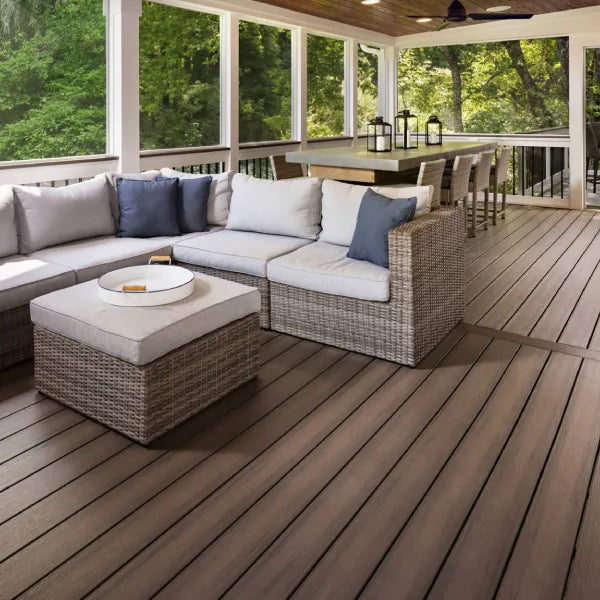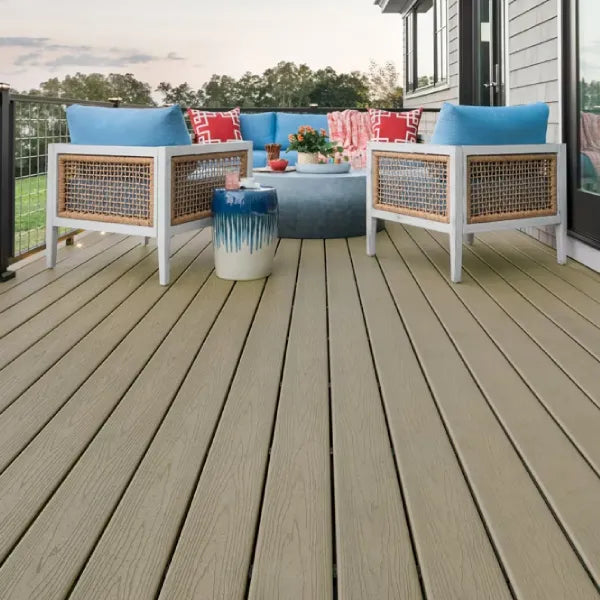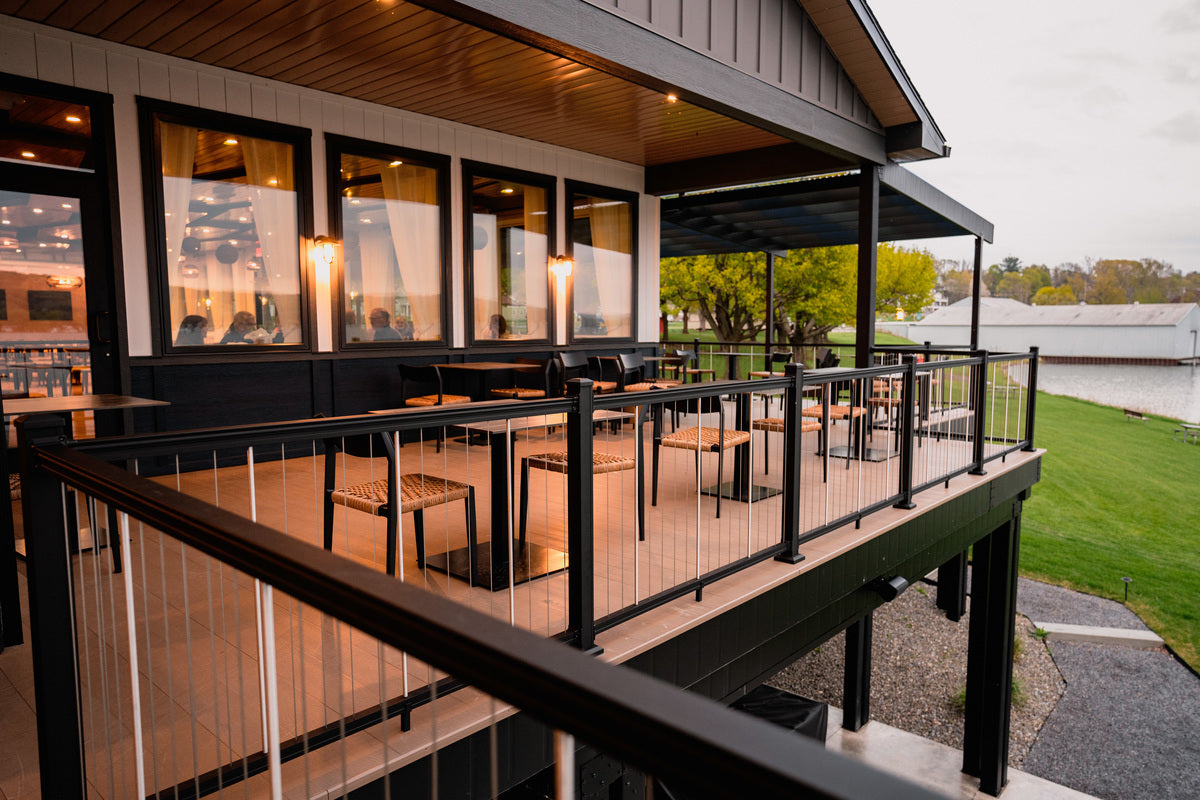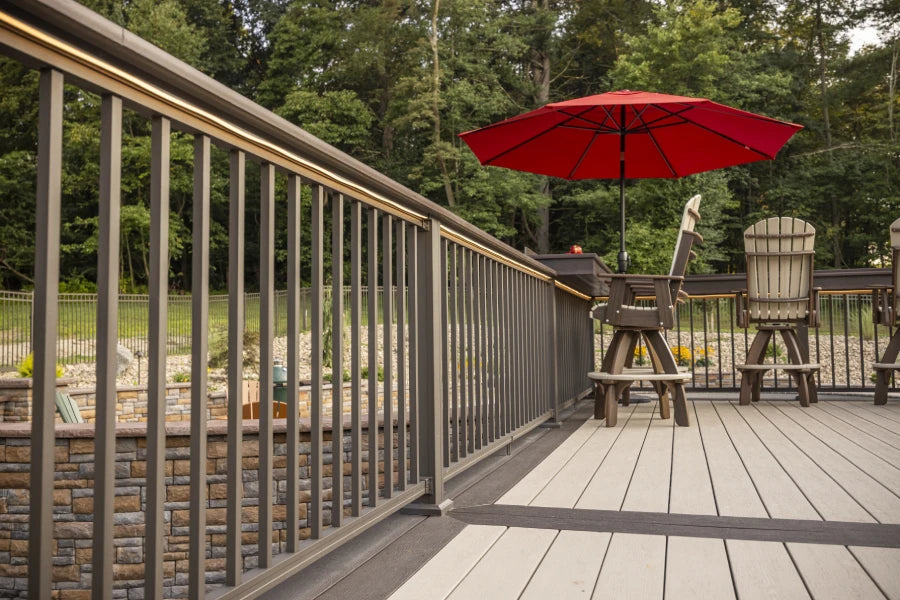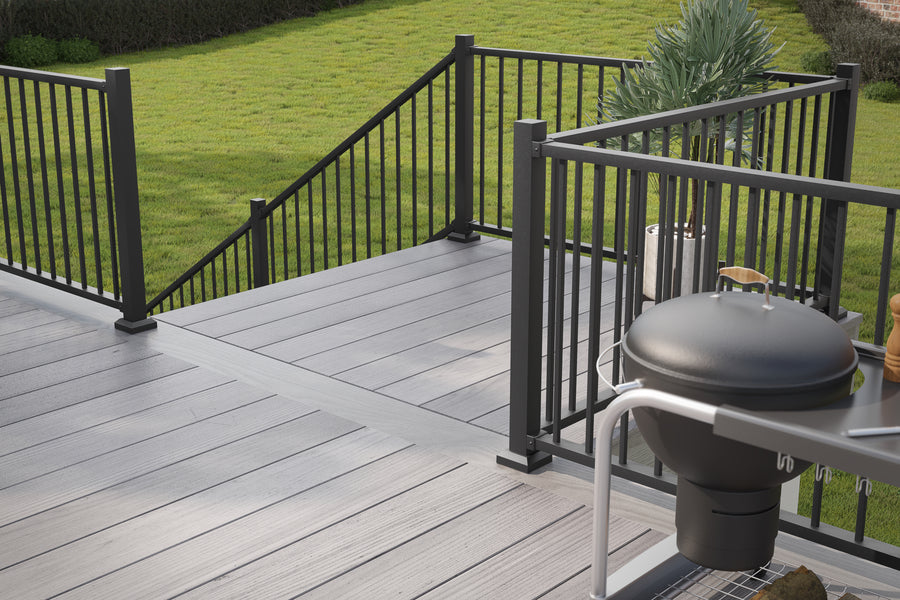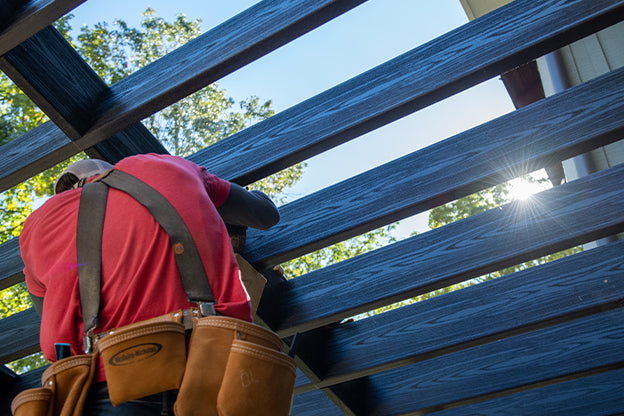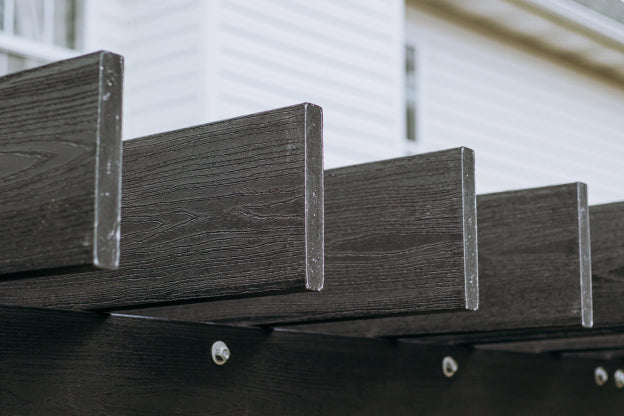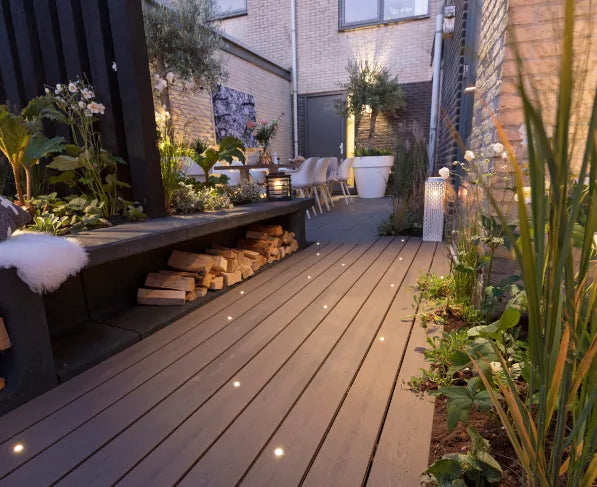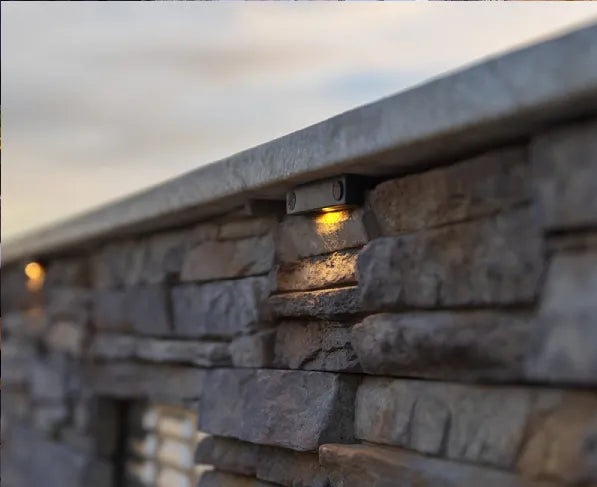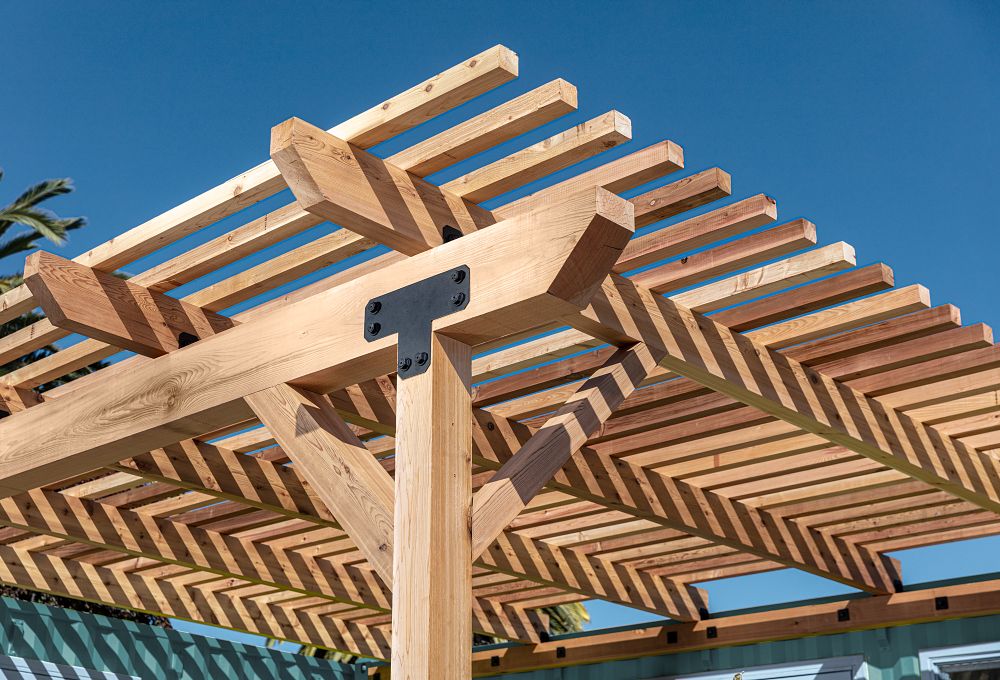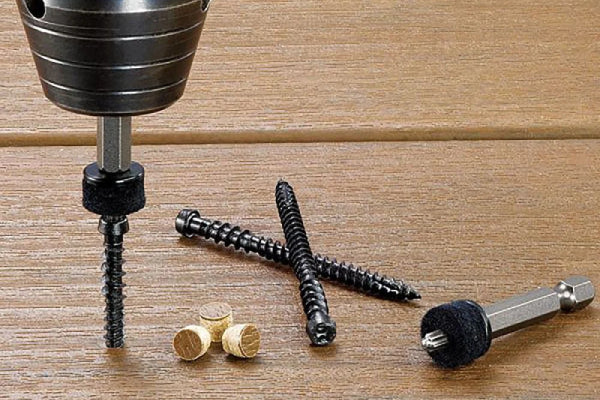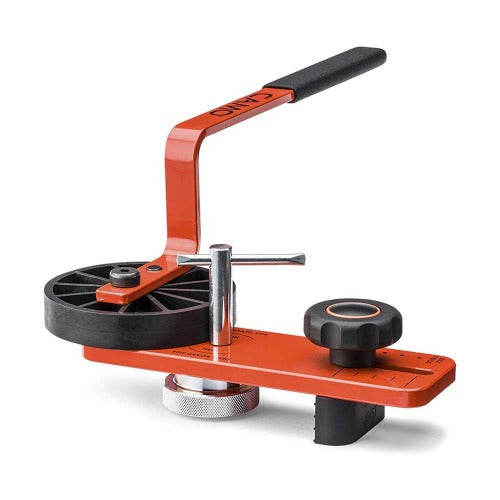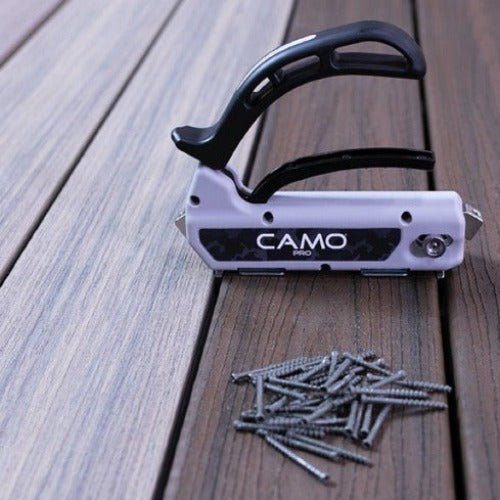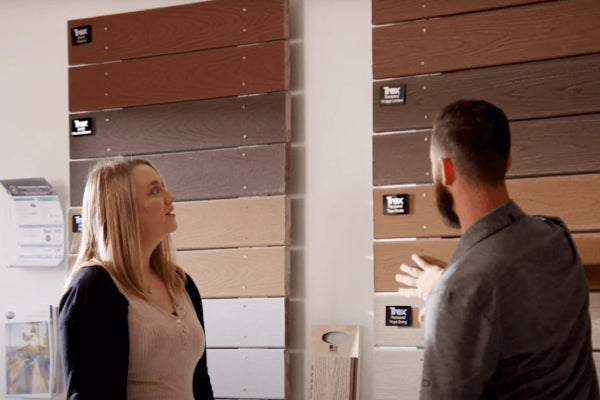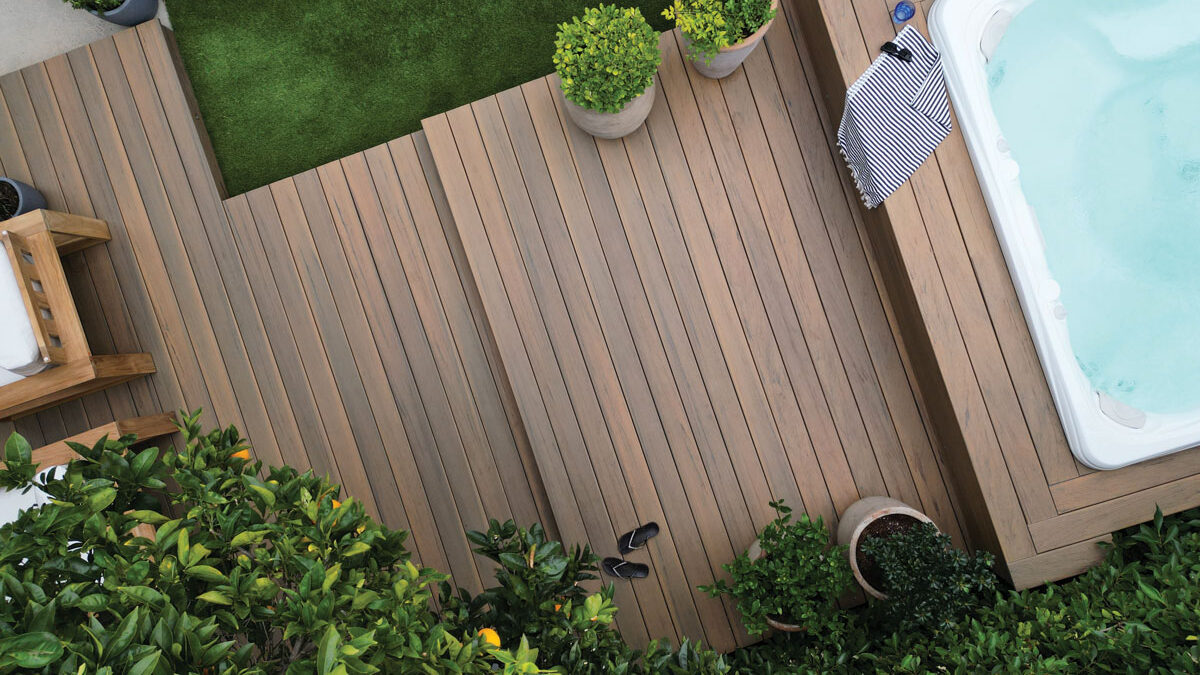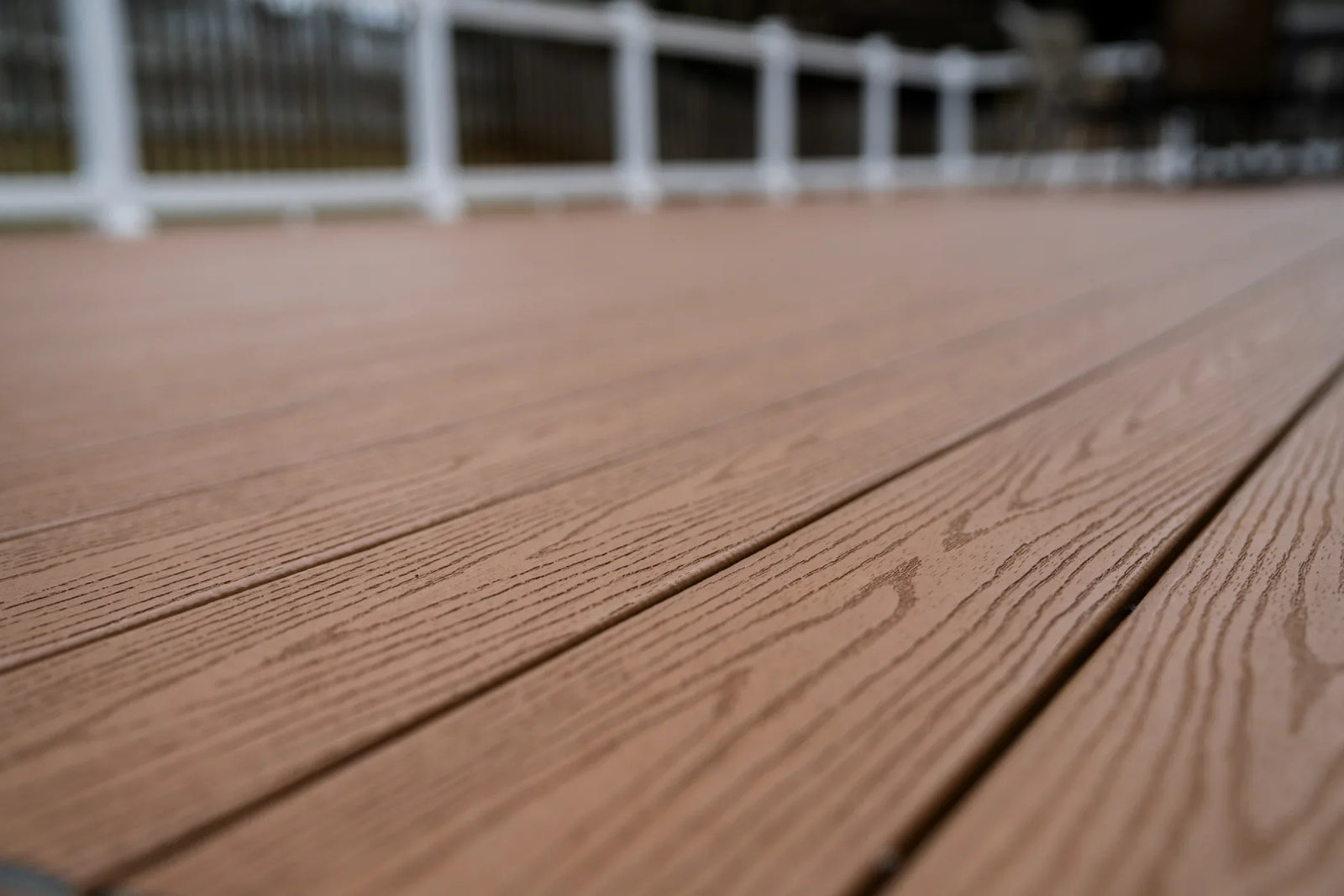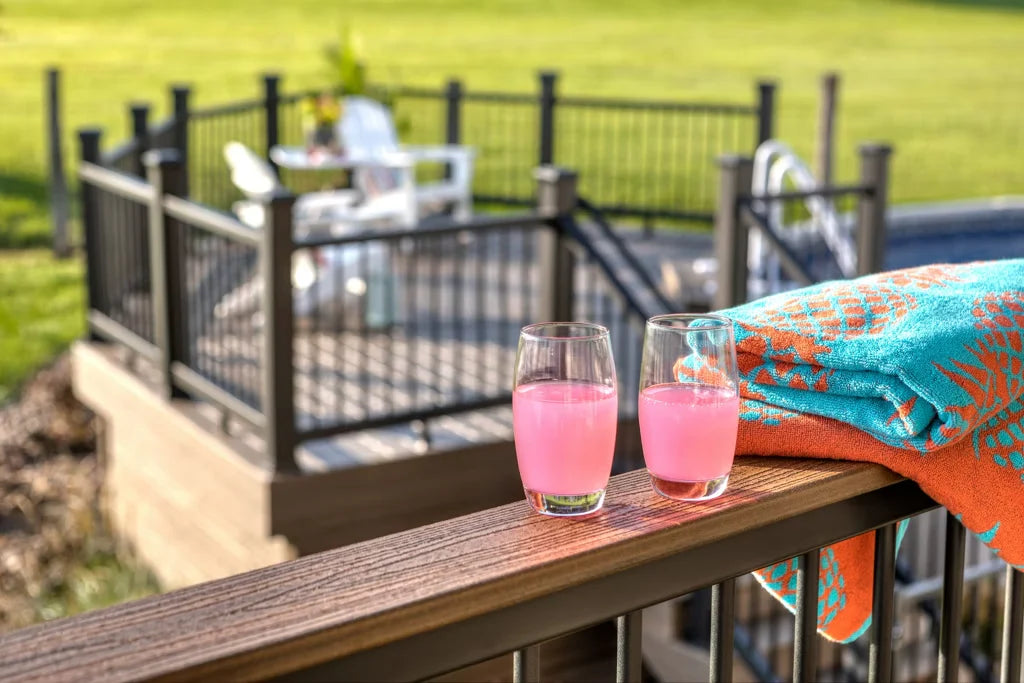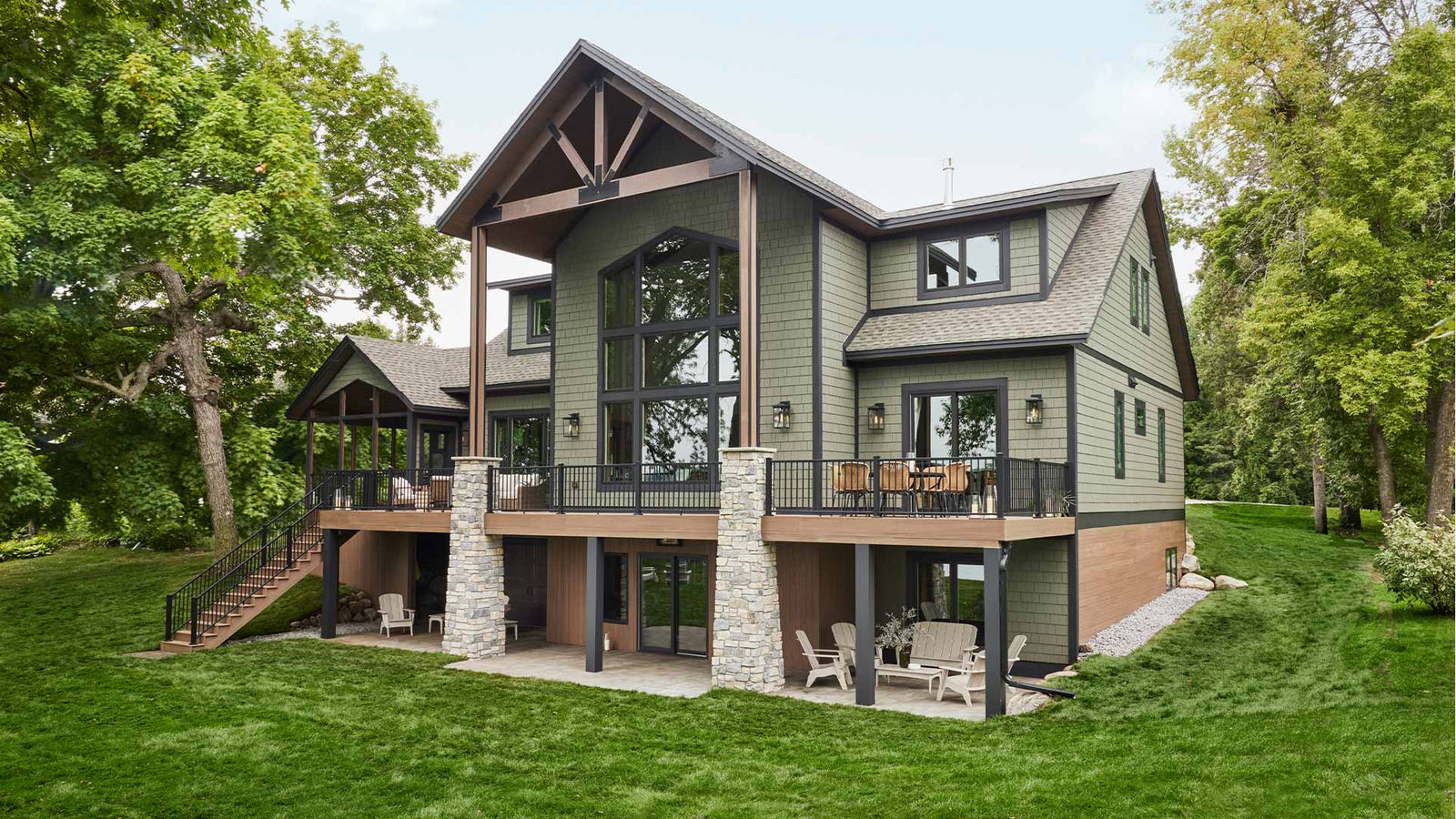Build a Deck That Can Hold a Hot Tub
Planning a hot tub for your deck? Before you start shopping for swimsuits and bath salts, you need to understand what it takes to build a deck that can safely support one.A standard hot tub weighs around 5,000 pounds when filled with water and people. That's roughly the weight of a small car sitting on your deck. If your existing deck wasn't built with that kind of load in mind, you're looking at serious safety issues.Here's what you need to know about how to build a deck for a hot tub, including load requirements, material choices, and design considerations that keep everything safe and functional.
Understanding Hot Tub Weight and Load Requirements
Most decks handle about 50 pounds per square foot. This is plenty for furniture, people, and a grill. A hot tub, however, is a different story.Once you factor in the tub itself, the water, and a few people soaking, you’re easily pushing 100 pounds per square foot or more. And unlike regular deck loads, all that weight is concentrated in one small area. That’s why you can’t just place a hot tub on an existing deck and hope for the best. The framing underneath needs to be engineered to handle the load without sagging, cracking, or failing.
Here’s what contributes to the total weight:
- The hot tub shell: typically 250 to 1,200 pounds, depending on size and material. Always check the manufacturer’s specifications for exact weight.
- Water capacity: water weighs about 8.34 pounds per gallon.
- Occupants: the average weight per person.
How to Calculate Hot Tub Load
A simple formula helps estimate the total weight your deck needs to support:
- Total Weight = (Weight of Empty Hot Tub) + (Gallons of Water × 8.34 lbs) + (Number of People × 185 lbs)
-
Pounds per Square Foot = Total Weight ÷ Square Footage of Hot Tub
Example Calculation:
| Component | Calculation | Weight |
|---|---|---|
| Empty hot tub | – | 375 lbs |
| Water weight | 195 × 8.34 lbs | 1,626 lbs |
| Occupants | 4 × 185 lbs | 740 lbs |
| Total weight | – | 2,741 lbs |
| Deck area | – | 29.17 sq ft |
| Load per sq ft | 2,741 ÷ 29.17 | 93.97 lbs/sq ft |
Pro tip: Most decks are designed to hold about 100 pounds per square foot. Your goal is to stay at or below that number, or reinforce your deck if you exceed it.
Build a Strong Foundation with OC Structural Framing
Building a hot tub deck starts with the framing. This is where most homeowners make mistakes, either by underestimating the load or spacing joists too far apart.
Key framing requirements:
- Closer joist spacing: Use 12 inches on center instead of the typical 16 inches for standard decks.
- Thicker lumber: Hot tub decks often require 2x10 or 2x12 joists instead of standard 2x8s.
- Add blocking: Install blocking between joists under the hot tub area for extra rigidity.
- Additional support posts: Place posts directly beneath the tub on concrete footings that extend below the frost line.
The idea is to create a reinforced section that acts almost like a separate platform. Some builders frame the hot tub area independently from the rest of the deck.When you're building or reinforcing a deck for a hot tub, the quality of your framing materials matters. Owens Corning Structural Lumber is a fiberglass-reinforced composite that outperforms traditional pressure-treated wood in every way that counts.Unlike wood, which can warp, twist, or rot over time, OC Structural Framing stays dimensionally consistent and resists moisture damage. Every piece is straight, strong, and reliable. This makes it ideal for high-load applications like hot tub decks where structural integrity isn't optional.
Before building or modifying your deck, consult a licensed contractor or structural engineer. They can calculate the actual load and confirm whether your structure can support a hot tub.
Ground-Level vs. Elevated Decks
Where you put the hot tub matters. Ground-level decks are easier to reinforce because you can pour concrete footings or pads directly under the tub area. The load transfers straight down into stable ground rather than relying entirely on the deck's framing.
Elevated decks require more planning. You'll need additional posts, beams, and joists to distribute the weight properly. The higher the deck, the more complicated the engineering gets.
If your deck is more than a few feet off the ground, hire a professional to assess the structure. This isn't a project where you want to guess.
Framing Considerations for Hot Tub Deck Support
Building a hot tub deck starts with the framing. This is where most homeowners make mistakes, either by underestimating the load or spacing joists too far apart.
Key framing requirements:
- Joists should be spaced closer together than standard deck framing. Many builders recommend 12 inches on center instead of the typical 16 inches.
- Use thicker lumber for joists and beams. While standard decks might use 2x8 joists, a hot tub deck often requires 2x10 or 2x12 lumber.
- Add blocking between joists under the hot tub area for extra rigidity.
- Install additional support posts directly beneath the tub. These should sit on concrete footings that extend below the frost line.
The idea is to create a reinforced section of deck that acts almost like a separate platform. Some builders even frame the hot tub area independently from the rest of the deck.
For structural framing, consider Owens Corning structural lumber. It's a fiberglass-reinforced composite that won't rot or warp like wood, which is important when you're dealing with constant moisture exposure.
Choosing the Right Decking Material
Hot tubs create a wet, high-traffic zone. Your decking material needs to handle constant moisture without warping, rotting, or becoming slippery. Here are the most common decking materials and how they stack up:
| Decking Material | Pros | Cons |
|---|---|---|
| Composite Decking (Trex, TimberTech) | Resists moisture, won't splinter, slip-resistant texture options, low maintenance, long lifespan | Higher upfront cost than wood |
| PVC Decking (TimberTech Advanced PVC, Fiberon PVC) | 100% waterproof, lightweight, easy to clean, won't rot or warp, very low maintenance | Higher cost, can feel hot in direct sun |
| Pressure-Treated Wood | Lower upfront cost, readily available, familiar to work with | Requires regular sealing/staining, can rot, gets slippery when wet, splinters over time |
| IPE Wood | Premium look, naturally resists moisture and decay, extremely durable | Expensive, requires regular oiling, harder to work with, limited availability |
Permits and Building Codes
Most cities require permits for hot tub installations, especially if you're modifying your deck or building a new one. Electrical work almost always needs a permit and inspection.
Building codes vary by location, but common requirements include:
- Minimum distance from property lines
- GFCI-protected electrical circuits
- Proper railing height and spacing if the deck is elevated
- Adequate drainage and ventilation
Check with your local building department before you start. Skipping permits can cause problems when you try to sell your home or file an insurance claim.
Hot Tub Placement Checklist
Where you put the hot tub affects how you use your deck. Here are the key factors to consider:
⬚ Distance from House
Close enough for easy winter access, but with clearance for maintenance panels and drain valves.
⬚ View and Privacy
Consider what you'll see in the evening (peak hot tub time) and whether neighbors have sightlines into the tub.
⬚ Electrical Access
Hot tubs need a dedicated 240-volt circuit. Plan the wiring route from your electrical panel early.
⬚ Water Access
Decide if you'll fill with a garden hose or run a dedicated water line.
⬚ Clearance Space
Leave at least 2–3 feet on all sides for getting in and out, plus room for towels, drinks, or a small side table.
⬚ Screening Options
Add privacy walls, lattice, or landscaping if needed.
⬚ Maintenance Access
Ensure you can reach the equipment panel, filters, and drain valves without moving furniture or climbing over things.
Safety Features Worth Adding
Hot tubs and water create slip hazards. Here's how to make your deck safer:
Add lighting: You don't want anyone tripping in the dark. Deck lighting around the tub area keeps things visible without being too bright. Solar-powered lights are easy to install and don't require wiring.
Install slip-resistant surfaces: Look for products with increased traction. Deckorators SureStone decking features a textured, slip-resistant surface that provides secure footing in wet conditions. You can also add non-slip tape or mats near the tub entrance for extra grip.
Upgrade your railing: If your deck is elevated, make sure the railing around the hot tub area is secure and meets code.
Maintenance Tips for Hot Tub Decks
Once your hot tub is in place, a little maintenance goes a long way. Use this checklist to stay on top of key tasks:
✓ Keep the area clean
Wipe up spills and splashes as soon as possible. Even composite decking can develop mildew if water sits too long. Sweep debris away to prevent buildup that can trap moisture.
✓ Inspect the framing every year
Look underneath the deck for signs of rot, rust, or loose fasteners. Tighten or replace any hardware showing wear. Catching small issues early prevents expensive structural repairs later.
✓ Seal or stain wood decking
If you used pressure-treated lumber or Ipe, reseal the boards every 1–2 years. This helps block moisture and extends the life of your deck.
✓ Monitor drainage and water flow
Ensure water flows away from your house and the hot tub base. Adjust grading or add drainage solutions if water pools under or around the deck. Proper drainage prevents structural damage and reduces slip risks.
Working with Professionals
Building a deck for a hot tub isn't a typical weekend DIY project. The engineering and carpentry involved are more complex than standard deck construction.
If you're confident in your skills and understand structural loads, you can handle the build yourself. But most homeowners benefit from hiring a licensed contractor or structural engineer to at least design the framing plan.
A professional can:
- Calculate the exact load requirements for your specific hot tub model
- Design a framing plan that meets local building codes
- Pull permits and schedule inspections
- Ensure the deck is safe and built to last
Yes, it costs more upfront. But it's cheaper than rebuilding a collapsed deck or dealing with an insurance claim.
Common Hot Tub Deck Questions
How much weight does a hot tub add to a deck?
A filled hot tub with occupants typically adds 80-120 pounds per square foot, depending on size and capacity.
Can I put a hot tub on an existing deck?
Only if the deck was built to handle the concentrated load. Consult a structural engineer to assess your deck's capacity before installation.
What's the best decking material for a hot tub?
Composite or PVC decking works best. Both resist moisture, provide slip resistance, and require minimal maintenance in wet conditions.
Build It Right
A hot tub can turn your deck into a year-round gathering spot. But only if it's built to handle the weight. Start with a solid framing plan. Use quality materials like composite decking that can handle moisture. Get the right permits. And don't cut corners on load-bearing support.
At The Deck Store, we've been helping homeowners and contractors build better outdoor spaces for over 30 years. Whether you need framing materials, composite boards, or just some advice, we've got you covered.
Ready to get started? Shop our decking collection or reach out to our team for product recommendations.
 This item ships for FREE!
This item ships for FREE!